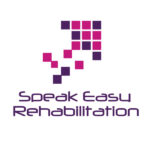Language modeling plays a critical role in helping children develop communication skills, serving as the foundation upon which they build vocabulary, sentence structure, and social language use. When adults and caregivers model language effectively—by speaking clearly, using varied vocabulary, and responding to children’s cues—they provide rich linguistic input that children can observe and imitate. This consistent exposure enables young learners to internalize the rules of language, which is essential for both expressive and receptive communication.
Moreover, language modeling supports the development of cognitive and social-emotional skills. As children hear and practice using language to describe their thoughts, feelings, and experiences, they become better equipped to regulate their emotions and interact with others. Engaging in back-and-forth conversations, even with children who are not yet verbal, fosters turn-taking, active listening, and empathy—skills that are crucial for successful interpersonal relationships and learning environments.
Finally, strong language modeling contributes to long-term academic success. Early language skills are closely linked to later reading and writing proficiency, as well as overall educational achievement. By immersing children in rich, responsive verbal interactions from an early age, parents, educators, and caregivers lay the groundwork for effective communication and lifelong learning. Supporting children’s language development through consistent, intentional modeling is an investment in their future growth and potential.
Leanne Sherred the founder of Expressable, shows some great examples of simple language modeling in this video.
Do you know someone who could benefit from speech therapy. Then contact Speak Easy Rehabilitation at 919.346.3350 today!
#speechtherapy #languagetherapy #speakeasyrehab

